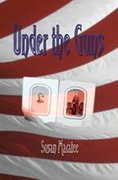Happy New Year!
For 2007 my fellow Scandalous Victorian and I have discussed making our blog a little more writer friendly. Of course we want to about the Victorian period, but blog about what we learn about the period, but we've decided to discuss our journey as writers along with joys and pitfalls of writing about the Victorian period. With this in mind, we're going to set ourselves some writing goals for 2007. So here goes!
Denise, (that's me!)1.) Rewrite
Westwind, a Victorian Western set in Colorado 1876.
2.)Research and write Nick's Story (I'm so bad at titles) which is a spin-off of both
Westwind and two other manuscripts,
Wicked Widow and
Wild Card. Nick's Story is set in Colorado, Boston and Newport RI, 1885, and brings together a Colorado rancher and a Woman's Right's reformer, who is also a member of Boston and New York society. It ought to be fun to see the way my rancher responds to the over-the-top opulence of upper-class American society during the Gilded Age. And of course there's a murder and a stalker, because what fun is a romance without a dead body or two?
3.) Write several blogs about the changes of women's roles during the Victorian period, the over-the-top opulence of the period (there was, no kidding, one party where men rode into a hotel on horses and ate upon horseback. These people were a little crazed) and American society in general.
4.) And I hope to invite a few other Victorian authors to share with us, either through blogging or an interview, their journey as authors. Okay, throwing the ball out to another of my Scandalous victorians. . . .
Okay, Denise. Here goes.
Susan's 2007 Goals1) My biggest goal for this year was to finish the rewrite of my Civil War time travel romance,
Erin's Rebel. This story is about a journalist who finds herself back in the time of the Civil War where she finds her true love, a Confederate army captain. After finishing, submitting and having this book rejected last March, I decided to revise the outline. This meant throwing about two-thirds of the original chapters away and starting from scratch. I'm happy to say that I completed the new draft just before Christmas. So, now my goal is to send the partial to the publisher I'm targeting. I hope to do this next week. After that, I plan to revise the manuscript, while I wait to hear back from the publisher.
2) I also want to revise the outline to my second Civil War romance that I'm calling
Katie Rose. This is the story of a young Irish immigrant widowed early on during the war. She disguises herself as a man to fight Yankees and becomes involved with the hero, a Southerner who unknown to her, is a Yankee spy. After revising the outline, I hope to write and complete the first draft by the end of this year.
3) My other goals are to enter 1 contest per month for
Erin's Rebel, at least until I get that contract.
4) I also plan to post two new blogs a month here and two blogs per week on my personal blog attached to my website about my life as a romance writer.
5) I also want to start preliminary work on a futuristic romance I plan to write and start worldbuilding for that project.
That's all I've got for now, so I pass it on the rest of the Scandalous Victorians . . . .
Christine's 2007 writing goals...1) Bullwhip my writing partner (a worse procrastinator than I am) into finishing the 2nd of a 4 book series we have planned that has very little to do with the Victorian Era, but is the first project we worked on together. Contemporary romantic suspense.
2) (Still bullwhipping my writing partner) Finish the first of our 3 book erotica series set in an alternate Victorian world where magicks are forbidden and those who practice them hunted down and killed.
3) Stop writing so many series! Geez, I look back at my first 2 points and wonder how we’re ever going to get anything done with all these series hanging over our heads.
4) Update my personal writing blog at least twice a week and this blog just as much, if not more.
5) Submit. Agents, editors, critiquers.
Must submit!
Kristin-Marie, next up and lighting a Victorian firecracker under some goals: 1) speed up a rewrite of a Victorian manuscript that slowed down for additional research with the intention of completing this version by Summer 2) attend one writing conference &/or take series of writing courses online to update craft techniques and market perspectives 3) blog bi-monthly on topics recently researched to share the wealth
Nicole McCaffrey 2007 Writing Goals (or, as I like to call it --
Writing? What the heck is
that???)
1) finish -- and submit -- Wild Texas Wind, which Kensington requested like... a lifetime ago!
2) begin research for the second in the Wild Texas series, about my rainmaker/gambler hero who meets his match when he is conned by an even better con than him.
3) Make writing a priority again. Between family illness and my new job at Wild Rose Press, somewhere along the line, writing got lost.
4) Blog more, procrastinate less.
Cynthia’s 2007 GoalsWell, 2006 was a great year as far as my writing was concerned, as I sold my first novel, In Sunshine or in Shadow, so I’m hoping to make 2007 just as good.
1.Finish the re-write of Coming Home, the sequel to Sunshine, and submit it to my editor by the end of February.
2.Complete the research and write the first draft of the third O’Brien story, Playing for Keeps.
3.Begin preliminary research for a post-Civil War series I’m planning.
4.Blog once a month.
5.Continue to hone my craft by taking some on-line classes.
6.Have a great time visiting England, Ireland and Wales this summer, and pretend it’s research!
Jenn's 2007 Goals2006 saw me published for the first time, finish the first draft of a novel, be interviewed on the radio, and stand up and read in public . . . TWICE! Not to mention join this wonderful group of bloggers, and get my website up and running. 2007 has a lot to live up to.
1. Finish the final draft of A Test of Loyalty. And I thought once I finished the first draft things would be easier! Okay, add to this one, learn not to be so naive when it comes to writing.
2. Well, now that its done, I should do something with it, right? Find an agent, enter contests, do stuff like that. Of course, that means Write a Synopsis, which is probably a good goal for a year all by itself.
3. Begin research on the second book, Bea's story. That's not its title, I'll have to think one of those up as well.
4. Renew my commitment to my critique groups. I belong to four of them now, and between them I'm becoming a better writer with a better product. I value each so highly, I should make sure I let them know.
5. Blog, take advantage of marketing opportunities as they come along, and generally make myself obnoxious. In other words, "Don't be shy!"
6. And my favourite goal: READ!!
Mary Ann's (Serious) Goal for 2007 Instead of a laundry list of specific things I intend to do or complete in this new year, I plan to make a
serious commitment to my writing. A
seriously serious commitment.
I'm going to treat it like a job - something I've never done.
Retiring after more than two decades of teaching in public schools, I swore I'd never again set an alarm clock on a daily basis. However, starting days whenever I feel like crawling out of bed is getting me nowhere fast. I resolve to make a daily
schedule for my "new" job as a writer.
The fine points of time allotments, etc., will need tweaking from time to time, but I intend to approach this as if I'm employed by someone hardnosed and unrelenting - a boss who expects me to start work on time and put in at least five 8-hour days per week.
With this kind of commitment, and the help of the wonderful Victorian Proofers, I should be able to complete my "dream" goal - completion of all rewrites on the book of my heart, Reaching Little Rock, before the end of 2007.
Marlene's goals for 20071. Continue working on my new manuscript "Hers to Captivate"
2. Do more research for the new work in progress
3. Try to participate in adding information to the blogs
4. And, now that I am not working at the gallery any longer, I plan to put more hours into working on my story, revisit my last two stories and concentrate on the deep POV and emotions in my stories.









